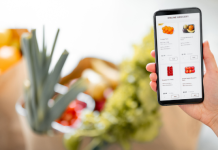I know more about blood than I ever wanted to know. I’m not a hematologist, oncology nurse, or even a person who likes to read nonfiction. What I am, however, is a mother of a child who used more than his fair share of other people’s blood and blood products.
In fact, my son is a record setter. When he was only 5 months old, he was diagnosed with Multiple System Langerhans Cell Histiocytosis, a rare and aggressive form of pediatric cancer. He used more blood and platelets in a four-month time span at Blank Children’s Hospital than any other patient the hematology/oncology team had ever worked with. They told me this, on more than one occasion.
 Our daily ritual was painfully similar. Early in the morning a compassionate nurse would draw my son’s blood, carefully avoiding excessive noise or light, so as not to wake my tired fighter.
Our daily ritual was painfully similar. Early in the morning a compassionate nurse would draw my son’s blood, carefully avoiding excessive noise or light, so as not to wake my tired fighter.
 Soon, that same nurse would return with a single sheet of white paper covered in numbers. It was a CBC report, his “complete blood count”. Those numbers dictated our entire day.
Soon, that same nurse would return with a single sheet of white paper covered in numbers. It was a CBC report, his “complete blood count”. Those numbers dictated our entire day.
Our entire life really.
Low hemoglobin meant a blood transfusion, and a low platelet count meant a platelet infusion was soon to follow. Maybe two if the count was low enough. My son’s chemotherapy and aggressive disease were draining him of the vital blood products he needed to survive.
We had only one option. We had to use other people’s donations.
We thrived on other people’s donations. It wasn’t a one-time thing. We didn’t occasionally get a blood product transfusion. We got them every single day.
Sometimes we had the luxury of waiting a few hours for the blood bank to send up our product. Other times I had to sit on the floor while the nurse elevated the transfusion pole to its highest level so we could use gravity to assist the process of getting platelet’s into my son’s failing body as quickly as humanly possible.
On one of the scarier days, I remember being completely overwhelmed with the thought of how many donors it had taken to keep my son alive.
I estimate it took between forty and sixty donors to save my son’s life.
It’s a staggering thought that sends chills up my spine as I type.
My son is four now. Today he’s practically perfect health wise. He’s in remission, living without a spleen but otherwise no worse for wear.
I am thankful every day for the gift of his life, but I find myself being particularly reflective of the generosity shown by his blood product donors in January, as it is National Blood Donor Month.
My husband and I donated blood on occasion before my son’s illness. (My mother set a good example. I remember admiring her ten-gallon pin from the Red Cross when I was sill in grade school, and I know my father-in-law has a long history of donation as well.)
Now, my husband and I donate regularly. It feels like the least we can do to express our thanks. Personally, I haven’t donated blood without crying since 2012. I can’t walk into a donation clinic without a rush of emotion. I picture all of the real people, like my son, who desperately need the blood products we donors can live without.
My husband and I started donating while my son was still at Blank. We went to LifeServe Blood Center because their downtown location was so close to the hospital. Now we use the Urbandale location for convenience.
Because my son’s story is so unique, he was even featured in some advertisements for LifeServe. He was pictured with his donor grandfather, and they were surrounded by some surprising facts.
Did you know that only 38 percent of people are able to give blood?
And less than 10% of those people do so annually.
I was shocked to hear this, and it made the amount of donors who stepped up to save my son’s live seem even more impressive!
Although I’m passionate about blood donation, the last thing I would ever want to do is shame someone who is unable to donate.
There are many valid reasons that blood product donation does not work for everyone. For example, my once generous mother hasn’t been able to give in years due to a low iron count.
Thankfully, there are ways to help without being a donor. Consider sponsoring a blood drive!
If you are ready to give it a try, or just need to get back into the habit of regular donation, I would recommend using this handy tool to set up an appointment. If you enjoy efficiency, do what my husband does. He gives double reds, more blood, less often.

















After reading an article about Andrew McMahon (a recording artist who battled cancer and won) regarding how blood donations were important and how a live bone marrow donation saved his life, I became an avid blood donor. Because I am A+ I get called as soon as my waiting time is up. LifeServe Blood center in Urbandle is a fantastic place to donate! I am also on the bone marrow donation registry. My thought is that I can donate something that will be replenished to help save someone’s life. Thank you for sharing your story because it makes it more real as to why I do what I do.
Thank you for your donations! My entire family is O+, which is a common blood type. I can’t imagine how much more difficult it would have been for my son had he had a rare blood type. You are helping so many people with every donation. Thank you so much for sharing.